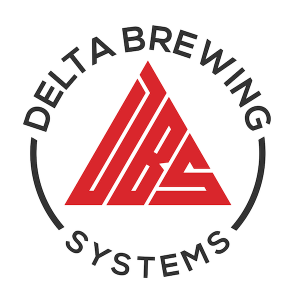Author: Jake Huolihan
Wooden barrels are often used by brewers in the production of sour beer, not just for aging, but fermentation as well. Various microbes including wild yeast and acid producing bacteria take up residence in the permeable wood then naturally inoculate wort transferred into the vessel, producing deliciously tart, dry, and characterful beers.
Undoubtedly used as vessels for fermentation since the dawn of brewing, barrels carry a certain amount of romanticism for me, a reminder of our less technologically advanced past, during which it’s likely sour beers were more the rule than the exception. Despite this sentiment, I’d never actually fermented a beer in a barrel, instead treating them as secondary vessels for aging. Until recently, that is.
A couple years ago, I made a sour ale that I racked into a 5 gallon barrel following primary fermentation. After nearly two years of aging, the beer was ready, so I kegged it up and was left with a empty barrel teeming with microbes. Inspired by some delicious commercial sours I knew to be foeder fermented, I finally had the opportunity to try my hand barrel fermenting a beer from start to finish.
| Making Barrel Fermented Sour Ale |
I’ve used my barrel for a few sours, so it presumably contains a healthy population of bugs from cultures including Wyeast 3763 Roeselare, Russian River Beatification dregs, and multiple New Glarus Vintage dregs. Prior to brewing, I prepared the barrel by swelling with boiling water and a small dose of sulfites for the purposes of both cleaning and eliminating the weaker microbes. Knowing Lambic is traditionally fermented in barrels, I designed a recipe of low OG that would be unhopped and pitched with Crooked Stave Brett to help it get started.
Barrel Fermented Sour Ale
Recipe Details
| Batch Size | Boil Time | IBU | SRM | Est. OG | Est. FG | ABV |
|---|---|---|---|---|---|---|
| 7.5 gal | 60 min | 0.0 IBUs | 2.7 SRM | 1.038 | 1.010 | 3.7 % |
| Actuals | 1.038 | 1.01 | 3.7 % | |||
Fermentables
| Name | Amount | % |
|---|---|---|
| Pilsen (Dingemans) | 8.187 lbs | 70.04 |
| Wheat, Flaked | 3.503 lbs | 29.96 |
Yeast
| Name | Lab | Attenuation | Temperature |
|---|---|---|---|
| Brett Barrel 3 | Inland Island | 80% | 55°F - 80°F |
Download
| Download this recipe's BeerXML file |
PROCESS
After racking the aged beer out of my barrel and getting it all prepped, it was time to make a new batch of wort. While the strike water was heating up, I weighed out and milled the grain.
With strike temperature reached, I incorporated the grains into the water then checked to make sure I nailed my target mash temperature, which was a bit high in order to produce a dextrinous wort for the bugs to munch on.

The mash was left to rest for 60 minutes.

At the end of the mash rest, I ran the sweet wort off to my boil kettle.

The wort was then boiled for 60 minutes, during which it did not receive any hops.

Once the boil was complete, I quickly chilled the wort with my IC before taking a refractometer reading confirming it was at my target OG.

After letting the break material settle out, I first transferred the wort to a Brew Bucket that I carried from the garage to my basement, where my 6 gallon/23 liter barrel resides. I then racked 4 gallons/15 liters of the wort into the barrel, leaving 1 gallon/4 liters in the Brew Bucket.
Next, I pitched a pack of Inland Island Brett, which is sourced from Crooked Stave, into the the barrel, while a pack of Saflager W-34/70 was pitched into the leftover wort. The main reason I did this was to avoid a messy blowoff.
After about 5 days I topped off the barrel with the fermented beer from the Brew Bucket.
A hydrometer measurement of the blended beer suggested to me it would likely drop a few more points while aging.

I left the barreled beer alone for 2 months before pulling another hydrometer sample showing it dropped to 1.003 FG.

Pleasantly sour at this point, I proceeded with packaging.
The kegged beer was placed in my keezer where it was burst carbonated for a brief period before I reduced the gas to serving pressure. After a couple weeks of conditioning, it was clear, carbonated, and ready to drink.
| IMPRESSIONS |
Up until the last year or so, fermenting in a barrel isn’t something I’d ever really considered, rather in my mind they served the purpose of storing already fermented beer. Having already aged a previous sour beer in my barrel, I had a decent idea of what to expect in terms of the profile it would impart, though I couldn’t have been sure how much wood character would be picked up as the beer was fermenting in the barrel.
I served this beer to a handful of friends both straight from the barrel as well as once it was carbonated and on tap. One of the more commonly discussed characteristics, which was shared by nearly everyone who sampled the beer, was its clean sour profile. Despite being pitched with various microorganisms including Brettanomyces, it seemed the lactic acid bacteria really dominated, which I reckon may be due to the relatively brief time the beer spent in the barrel. Additionally, while some tasters perceived a touch of barrel character, it wasn’t described as being very strong, which could be a pro or con depending on one’s personal preference. Nobody who sampled the beer noted any off-flavors and it was generally agreed to be a clean, refreshing sour ale that would make for a great accompaniment to mowing the lawn.
I have to say I was very pleased with how this beer turned out, it far exceeded my expectations and was an absolute delight to drink. I perceived it as having a vanilla nose with a balanced lactic tartness that yielded to a smooth flavor of similar notes with a pleasantly round sourness. For only spending 2 months in the barrel, the character came through well, though for my next batch, I plan to leave it alone for a solid year.
If you have thoughts about this recipe or experience making something similar, please feel free to share in the comments section below!
Support Brülosophy In Style!
All designs are available in various colors and sizes on Amazon!
Follow Brülosophy on:
FACEBOOK | TWITTER | INSTAGRAM
If you enjoy this stuff and feel compelled to support Brulosophy.com, please check out the Support page for details on how you can very easily do so. Thanks!

















9 thoughts on “Brü It Yourself | Barrel Fermented Sour Ale”
It would be very interesting to see how this batch will change over time – if it does stick around. I’m sure the other bugs would grab hold and make it a completely different beer as early as 6 months from initial fermentation.
Thanks for putting this one together.
It seems like you didn’t get much brett character because you made a 0 IBU beer… IBU seems to be the control point between sour and funky. Brett does not take much time to work from my experience, maybe 6 weeks can get you solid funk.
May be po-tay-to/po-tah-to, but the 0 IBU essentially allowed the LAB to flourish. So it isn’t necessarily the IBU inhibiting the brett character, it’s that in the presence of other microbes (LAB, specifically), brett takes a while to express itself. However, if a staggered innoculation is performed (brett first), the brett comes through MUCH more and quicker, regardless of IBU.
To up the brett character, you should use a ferulic acid rest (~113F) combined with a primary yeast strain that produces a lot of esters and phenols, as the classic “brett” characteristics often come from the transformation of the pre-existing esters and phenols in the beer. Also, if you’re using bottle dregs, don’t be afraid of ramping up the IBUs. Those LAB are well tested, and can likely handle 25+ IBU. Plus, lots of low alpha hops have the potential to increase head retention and provide additional precursors for biotransformation by brett.
Cool write up Jake! As a guy who is not really into sours yet, I like to read about the different methods and processes involved in the sour beer process. Question: are you purging your barrel with CO2 after opening it each time? I know there is some ingress of O2 through the barrel but I am assuming large O2 exposure is still to be avoided.
Where did you (or anyone else that has one) obtain that 5gal barrel?
Very cool brew, Jake. I’m interested to try it but have a few questions:
What wood was the barrel made of? Had it been used for anything besides beer prior to this experiment? Where did you buy the barrel?
You said it was a 6 gallon barrel that you put 4 gallons of wort and topped up with 1 gallon from the Brew Bucket. So there was about I gallon of the head space in the barrel. Did you have airlocks on the barrels through fermentation?
What was the fermentation temperature?
No mention of hops, not even dry?
> wood
Hungarian Oak, medium toast I believe. Was used many times before this most notably by a two year sour as I discussed.
As to the volumes, there was a slight mix up with those in communication between me and marshall. I fermented about four gallons in the barrel and 3 in the SS bucket, topped off bucket to full once active ferm was slowing. No airlocks, foil.
> ferm temp
Is discussed in the article, 60-66 I believe, it’s just a room in my basement.
> hops
The beer was unhopped.
Love this site